Upgrading our Gas Hob to Induction
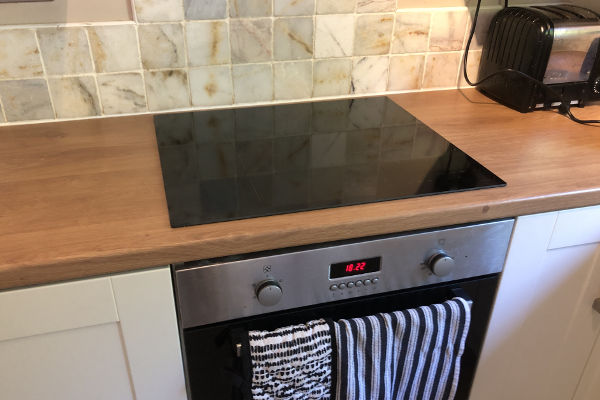
I’m on a mission to stop burning fossil fuels.
As well as heating the atmosphere, burning fossil gas indoors causes asthma in children. Cool.
Shortly after that research was published, fossil fuel companies funded an influencer campaign that “gas is best”.
That was the final kick up the arse that got me to say bye bye to our gas hob.
Here are some notes and pointers for anyone doing the same.
I do like cooking with gas
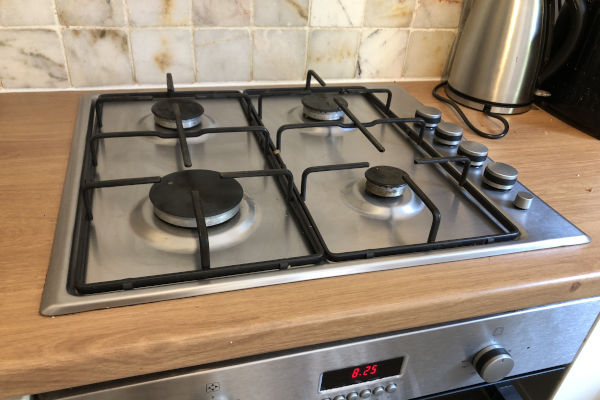
I must confess I like cooking with gas, in particular:
- Power: on maximum power you can heat things up really fast.
- Responsiveness: gas turns up and down quickly, which is important for cooking.
- Controls: physical knobs are great. I’ve used some terrible touch-screen hobs.
I was sceptical that an induction hob could match the user experience of cooking with gas.
Let me go through my objections one by one. I’m a convert and perhaps you will be too.
Power: aren’t induction hobs really slow?
Some are: they come in two varieties: 13 Amp and 32 Amp.
A 13 Amp hob is much simpler to install because it just needs a normal wall socket.
I wanted the equivalent power of 4 gas rings. Turns out 4 gas rings is around 7.5kW of power. 7500W ÷ 240V = 31.25A.
Simple then, if you want like-for-like power, you need a 32A induction hob.
Responsiveness: aren’t induction hobs slow to turn up and down?
I think this is a misconception that comes from normal (non-induction) electric hobs. They have a heating element inside a heavy metal casing and they can take an age to turn up and down. I think this is because they have a big lump of thermal mass (metal) that needs to heat up or cool down.
Induction hobs work differently: they make the entire pan itself heat up or cool down. There’s no very little thermal mass, so no lag, just like a gas flame.
Controls: don’t induction hobs all have fussy touch screens?
I’ve used some really rubbish ones in Airbnbs, yes. Difficult to press, slow repeat speed, water intolerant, etc.
Fortunately, there’s at least one reasonably priced model with excellent touch controls.
Don’t you need special pans?
You do, but you may already have them. All but one of our pans turned out to be “induction ready”.
Planning the upgrade
There are a couple of steps involved in upgrading from gas to induction:
- choose a suitable hob
- plan the electrical connection
- remove the gas hob and cap off the gas
- install the induction hob
Choose an induction hob
I subscribed to which.co.uk for a month and looked at their Best Buys.
The top two were £700-800. The IKEA Matmässig was a more reasonable £300. Its review score was almost as good as the most expensive ones.
Check the counter-top hole size
⚠️ Check the size of the existing hole in your counter. Ideally get a new hob that needs the same size hole as the existing one.
I tried to measure the hole but I couldn’t easily lift the gas hob without breaking its putty seal.
Instead, I found the model number of our gas hob from a Howdens invoice in my email. I searched online and found an installation manual which specified the hob needs a 56 x 49cm.
IKEA’s helpful website confirmed that the Matmässig also needs 56 x 49cm.
Plan the electrical connection
In the UK, electric ovens typically have their own dedicated cable and MCB switch at the consumer unit (in old parlance, a “fuse” in the “fuse box”).
Traditionally these cables are 6mm² which has a maximum current carrying capacity of 40 Amps (depending on where and how the cable is installed.)
The MCB in the consumer unit is chosen to be lower than the maximum current the cable can carry. Ours had a 30A MCB. So if something tries to draw more than 30A, the MCB will trip (switch off) rather than allow too much current to flow through the cable.
Modern electric ovens are more efficient and only require 13A, so their 6mm² cable has capacity for additional load.
In our case, our setup was:
- 6mm² cable running from consumer unit
- 30A MCB switch on the consumer unit
- 13A oven, confirmed by looking at its instruction manual.
Adding a 32A induction hob to our 13A oven pushes the total maximum currently to 45A, well over the 30A MCB.
I hired and electrician and we talked through two options:
- stick with 30A and see if we ever actually exceed 30A (tripping the MCB)
- upgrade the MCB to 40A
Option 1) is safe but may be annoying if we keep tripping the MCB.
Option 2) would have been ideal but the electrician didn’t have an old fashioned 40A MCB with him at the time.
The electrician advised that if we apply a “diversity” calculation it’s unlikely we’ll trip the 30A MCB. If the oven is drawing full power, that leaves (30-13 = 17A) for the induction hob. Assuming each hob uses (32 ÷ 4 = 8A), we’d only hit 17A if we were using 2 hobs on maximum power and a third as well, all while using the oven on full. It sounds possible, but not typical.
We agreed to try out the 30A MCB. If we need to upgrade, it’ll be worth replacing our customer unit with a modern, bigger one to accommodate a heat pump.
Remove the gas hob
We needed a registered gas engineer to do this. The electrician recommended a friend who came the next day.
The engineer shut off the gas supply at the main meter where the gas enters the house.
He unscrewed the oven from the carcass and slid it out. As a he did so there was a pop and the house’s RCD tripped, killing the power to everything in the house.
Clearly there was an electrical fault somewhere in the wiring of the oven. Not good.
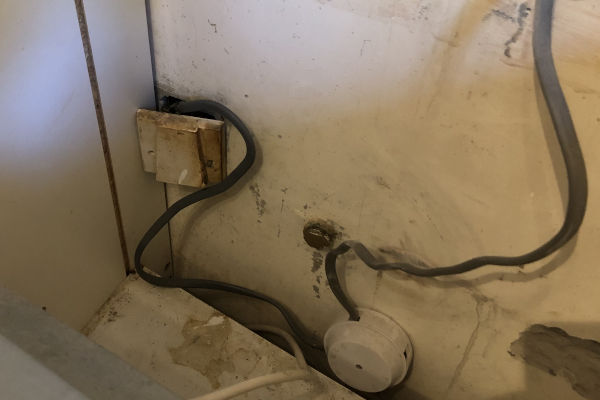
The kitchen fitters made a total mess of the oven install: the wall socket was left hanging off!
We switched off the oven’s MCB before carrying on.
Next he unscrewed the copper gas pipe and removed the hob from the counter.
This left a short threaded pipe protruding from the wall. He applied some white gunk to the thread and screwed on a cap, sealing off the gas supply.
He waited a while, turned the supply back on and did some testing with a gas detecting device. Job done.
Cost: £60
Seal the hole in the counter
While you’ve got a big hole in your counter, it’s worth checking the kitchen fitters sealed the edges of the chipboard. Ours didn’t.
This is to stop water getting in under the hob and swelling your chipboard. It doesn’t take much to ruin it.
Ideally, you should use epoxy for this. I didn’t have any so I applied a very generous splodge of external wood glue.
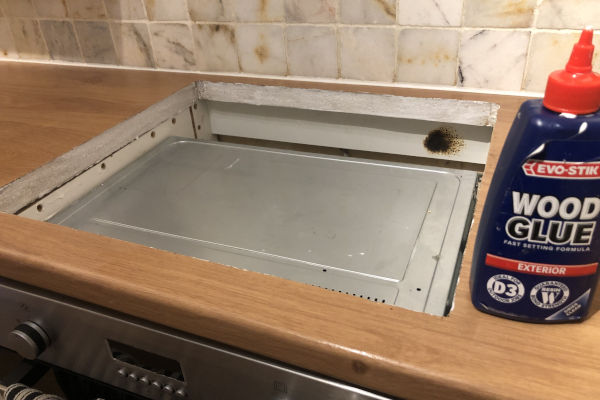
Install the induction hob
The day after the gas hob was removed, the electrician came to wire in the induction hob.
He slid the oven back out and discovered that the oven cable’s Earth wire had not been connected and the insulating plastic box was left open, exposing live and neutral.
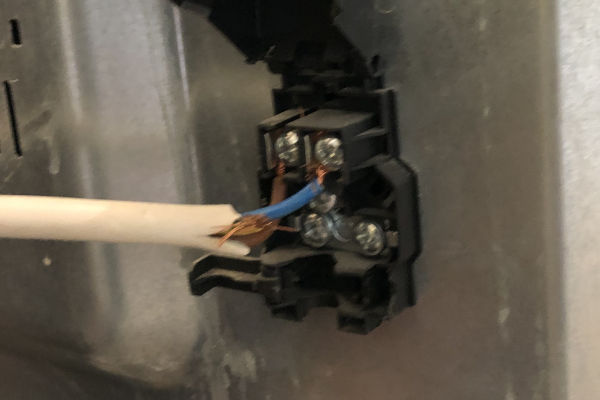
Sadly the electrician said he sees this all the time: kitchen fitters that don’t bother to subcontract the electrical work but are also clueless about doing it themselves.
So beware: if you’re planning to DIY, turn everything off, check everything for live, and don’t assumptions about the existing wiring.
Cost: £70
So far so good
We’re two weeks in. The verdict?
Bloody brilliant.
I’ll start with my only gripe: it is fussy about water spillages. It does an angry beep for about 5 seconds before turning off. I presume this is to protect against things boiling over, but it’s annoying as switching off loses each hob’s power setting and resets any timers. This isn’t a major gripe as I now know to be careful about clearing up spills and it doesn’t catch me out any more.
Good points:
I love the power! It can boil water quicker than the kettle! Makes sense as pans have more heating surface area than the kettle heating element.
I love how easy it is to clean, with a single glass surface that can be wiped.
I love that I’m not thinking about toxic gas combustion fumes every time I cook.
I love that in these long sunny evenings, our south-west facing solar panels can power the hob cleanly and cheaply.
I love the timer. This was an unexpected bonus: the hob can turn itself off after a number of minutes and make a chiming sound. That’s extremely useful! Many things I cook have a cooking time, for example boiling eggs, poaching eggs, pre-boiling roast potatoes and so on.
Cost
- IKEA Matmässig: £300
- Removing the gas hob, capping the pipe: £60
- Installing the new hob: £70
- Total cost: £430
Not a cheap upgrade, but I’ve no regrets.
If you’re tempted to switch, do it!
The second best way you can say f**k you to the fossil fuel companies is to stop buying their product 😉